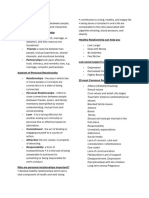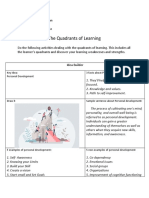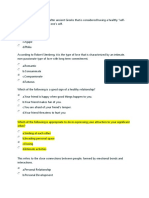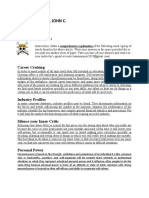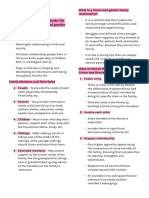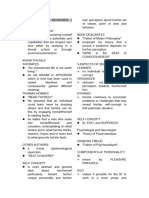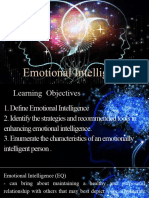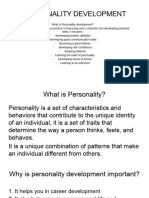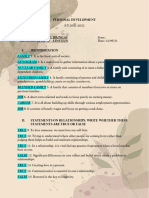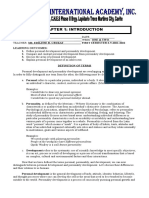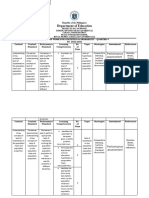0% found this document useful (0 votes)
177 views64 pagesPerdev
Here are the key steps in career planning:
1. Self-assessment - Evaluate your skills, interests, personality and values.
2. Research - Research career options that match your interests and abilities by utilizing career assessment tools and exploring occupations.
3. Plan - Develop a career plan by selecting a career path or options to explore further through education or training.
4. Application - Take action by applying to schools, training programs, internships or jobs related to your career choice and gaining relevant experience.
The career planning process helps individuals select careers that are personally fulfilling and make the most of their strengths. Self-assessment is the first critical step to aid self-awareness and guide informed decision making. Research and
Uploaded by
Ritchelle MabandosCopyright
© © All Rights Reserved
We take content rights seriously. If you suspect this is your content, claim it here.
Available Formats
Download as PPTX, PDF, TXT or read online on Scribd
0% found this document useful (0 votes)
177 views64 pagesPerdev
Here are the key steps in career planning:
1. Self-assessment - Evaluate your skills, interests, personality and values.
2. Research - Research career options that match your interests and abilities by utilizing career assessment tools and exploring occupations.
3. Plan - Develop a career plan by selecting a career path or options to explore further through education or training.
4. Application - Take action by applying to schools, training programs, internships or jobs related to your career choice and gaining relevant experience.
The career planning process helps individuals select careers that are personally fulfilling and make the most of their strengths. Self-assessment is the first critical step to aid self-awareness and guide informed decision making. Research and
Uploaded by
Ritchelle MabandosCopyright
© © All Rights Reserved
We take content rights seriously. If you suspect this is your content, claim it here.
Available Formats
Download as PPTX, PDF, TXT or read online on Scribd
/ 64
